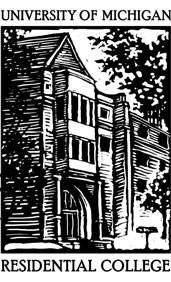It was the best of times, it was the best of times. St. Petersburg has been one adventure after another. Our first morning in Petersburg we visited the Winter Palace and the adjoining Hermitage. With the temperature a steady -8 C and snowing, the Winter Palace was blanketed in snow. The Tsars certainly built to impress, the grand staircase was a dazzling display of wealth, but this paled in comparison to the Golden Room, which lived up to its name and had been used to receive the King of Spain by President Dmitri Medvedev only the day before our tour. The vast amount of art in the Hermitage was staggering, our tour guide told us that if we were to spend 1 minute in front of eve piece of art in the Hermitage collection, we would need 9 years to see all 3 million pieces. The collection includes many originals from artists like Rembrandt, Vincent Van Gogh, Michaelangelo and Monet. The odd thing about the collection was that it held much French, Dutch, and Italian art and next to no Russian, perhaps speaking about the Western tastes of the Tsars of St. Petersburg.
After our Hermitage excursion, we had lunch at one of the Stolle Cafe chain restaurants, which specialize in traditional Russian cuisine. Our meal included kapustiye pirogi (russian savory pastries with cabbage), borscht with plenty of sour cream, pelmeni (russian dumplings similar to ravioli), and a salad consisting of apple shavings and shredded cabbage. Petersburgers seem to be very fond of smoking, especially indoors, something that as an American I'm not used to.
After lunch, we had some free time to wander about in downtown St. Petersburg around the Church on the Spilled Blood, to buy souvenirs or just sight-see. I used this opportunity to speak privately with out tour guide, who was very willing to give her opinions on life in St. Pertersburg, contemporary and in Soviet times, and even what she thought of the Russian Orthodox Church. She gave me plenty of information on the Church on the Spilled Blood, how it had only been completed in 1907 and was closed in 1917, destroyed in WWII, reconstructed by the Soviet government over a period of 40 years, and now a museum.
The next item on our itinerary was the Sts. Peter and Paul fortress, the very heart of Peter I's St. Petersburg. Even though the fortress has never seen combat, it has housedd the Trubetskoye Prison, a maximum securitycomplexx used for the violent or political criminals. We saw the former cells of Russian dissidents like Krapotkin, Alexander Ulyanov (Lenin's Brother), and Lev Trotsky. We saw the cell named “the punishment cell” where inmates who broke the rules of the prison were kept in solitary confinement. Though closed now, Trubetskoye has never had a successful escape attempt.
St. Paul Cathedral is also in Sts. Peter and Paul Fortress, and its spire is said to be the highest point in St. Petersburg, as Peter I commanded it so, a law that is still on the books today. This is perhaps the most unorthodox church I have ever seen belonging to the Orthodox Church. Without the Cyrillic lettering, I would have guessed that we had entered a classic Baroque Cathedral in France or Italy. It has classical frescoes on the ceilings, western-style depictions of Jesus, the Theotokos (Mary, the Mother of God), and the Saints in the iconostas, the wall of icons that separates the altar from the nave and symbolizes how humanity's sins isolate it from God, was unlike anything I have seen anywhere else in the world. The cathedral, though, is the burial place of every Tsar since Peter I.
After all this sightseeing, we were given the late afternoon and evening as free time. My group of Monica and Andrew navigated several stores and a Subway only using Russian. The architecture in downtown Petersburg is remarkably old, being of 18th and 19th century styles, unlike the Stalinist buildings that we saw on the trip from Pulkovo airport on the outskirts of St. Petersburg. The pastel colours of the city center contrasted very nicely with the overcast sky that we had throughout our stay in Petersburg. This was different to the Stalin-era drab grey blockish buildings that make a ring around downtown, but even later buildings built in Petersburg, such as the 1907 Church on the Spilled Blood.
St. Petersburg has been a lot of fun, and if we had stayed longer I'm sure that we would have had even more adventures, but we came for Vytegra. Tommorrow promises to be an interesting day, I'm looking forward to the Svirstroy Monastery that we'll be vising on the way to Vytegra.


No comments:
Post a Comment